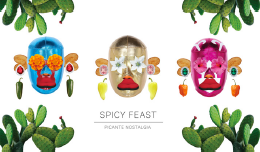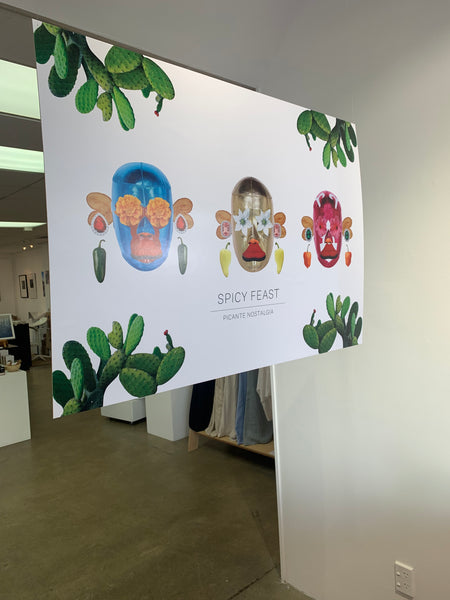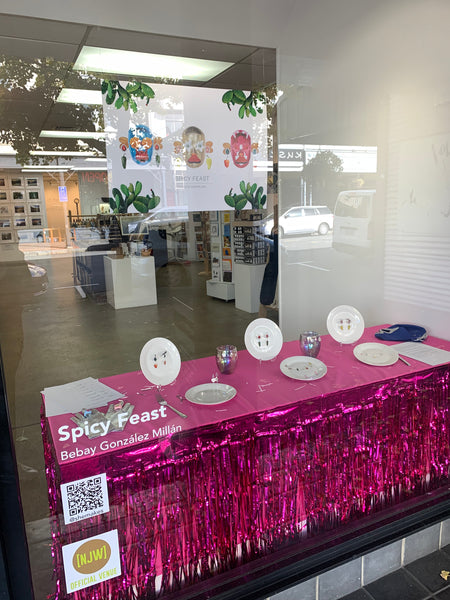


Bebay González Millán
Spicy Feast Graphic
A1 Ink-jet over Cardboard
The Inspiration Behind My Poster
For my poster, I wanted to blend iconic Mexican symbols with the themes of fun, resilience, and cultural pride. The central figure is inspired by lucha libre, a symbol of both playfulness and strength. The flowers in the luchador’s eyes are all edible – each one carrying deep significance in Mexican cuisine and traditions. The first is the chili flower, representing the beginning of a spice-filled journey. The second is the hibiscus (Jamaica) flower, used in aguas frescas and tacos, bringing a deep red vibrancy to our dishes. The third is the Cempasúchil flower, a key element in Dia de los Muertos, a celebration of memory and connection beyond borders.
The nose comes for the golden age of Mexican cinema, inspired by El Santo, one of the most emblematic luchadores (the was the era when luchador movies became a cultural phenomenon in Mexico – something worth researching further!) The ears, where my jewellery pieces hang, are actually sweet bread called orejas (literally ‘ears’), made of puff pastry.
The earrings themselves are, of course, chiles from Mexico – each one representing different flavors and spice levels. The Chile güero, mild and perfect for snacking, the Jalapeño, essential for salsas and everyday dishes, and the habanero, my personal favourite – small but powerful.
Another playful icon in my poster is the red lips couch, inspired by Salvador Dali. While this may not seem connected to Mexico at first, there is a hidden link. Working in a museum, I’ve had the privilege of learning from the most unexpected conversations. I discovered that this couch was commissioned by the eccentric British collector Edward James, who also created the surrealist garden Las Pozas in the jungle of La Huasteca Potosina, Mexico – one of my favourite places in the world. This connection felt like a perfect tribute to the way art and culture travel across time and space.
And finally, the cactus, or as we call it, nopal. This plant is a fundamental part of our cuisine. We remove the spines, saute or grill it, and use it in salads, with eggs, or simply toasted with fresh cheese. The nopal is a symbol of resilience – thriving in harsh conditions, deeply rooted, and yet always growing. All these elements together tell a story – not just of food, but of identity, history, and the way we carry our roots with us, no matter where we go.
Bebay González Millán
Spicy Feast / Picante Nostalgia for Nelson Jewellery Week 2025
